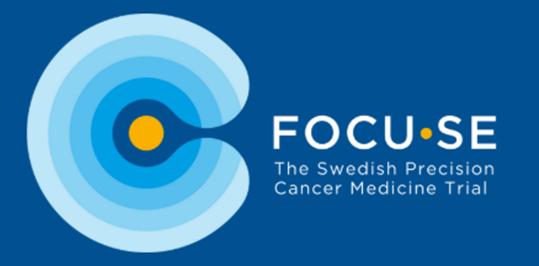 < Back
< BackFirst Drup-Like Clinical Trials Community Advisory Board in PRIME-ROSE - Health-Related Quality of Life
PRIME-ROSE on 24-26 January 2024 gathered community experts in Oslo for the first Community Advisory Board (CAB) of the DRUP-Like Clinical Trial (DLCT) Community.
The DLCT CAB format is loosely based on the ECABs, European Community Advisory Boards that EATG, the European Aids Treatment Group, established in the past to successfully accelerate clinical development. As the name suggests, DRUP-Like Clinical Trials have a clinical trial at their core but are defacto complex precision medicine implementation ecosystems that connect initiatives for equitable coverage to cancer care, advanced molecular diagnostics, the DLCT itself with decision-making processes.
To reflect the complexity of this ecosystem, the 1st DLCT CAB was composed of cancer patient advocates from national and European cancer patient organisations for three different solid tumour diagnoses with personal experience and / or interest in the advanced cancer setting that DLCTs currently serve, investigators from 5 national DLCTs (Finland, the Netherlands, Norway, Portugal, Sweden), regulatory experts, HTA experts, buyers / payers, members of the EORTC Quality of Life group, including statisticians, and members of the PRIME-ROSE consortium.
Bettina Ryll explains: "We speak of DRUP-Like Clinical Trials as if they were just trials - there obviously are trials at the core of it all, but what makes DLCTs different from other precision medicine trials, is the community and the multi-stakeholder ecosystem that surrounds them and that turn a pragmatic clinical trial into a full system for precision medicine implementation. So, it made sense to have everyone at the 1st DLCT Community Advisory Board - if we want to implement, we have to have everyone on board."
Quality of life in cancer
While stakeholders in the cancer community tend to unanimously agree on the importance of quality of life as a concept, opinions diverge on how to define, measure and act upon that information. Patients seek better symptom management, clinicians desire insight for adapting treatment strategies, regulators seek information on risk / benefit trade-offs, HTA bodies focus on cost-effectiveness and comparability with other conditions, and payers aim for overall health gain.
hrQoL in the PRIME-ROSE expansion cohorts
The primary purpose of the 1st DLCT CAB was to formulate recommendations for the upcoming choice of the hrQoL tool to be implemented in the four PRIME-ROSE expansion cohorts and potentially, beyond as one of the core shared endpoints across all DLCTs.
The secondary purpose was to capture the different perspectives in sufficient depth and to list existing technical solutions and concepts to serve as a resource for the DLCT community and beyond. While hrQoL tools will always be a compromise balancing different demands, we hope to move the field forward in a way that is meaningful to patients and clinicians.
More detailed information from the CAB workshop is available in the attachment below. In summary, the 1st DLCT CAB formulated a concrete number of recommendations, supported by evidence and available resources (to be part of the upcoming report), for the consideration of the principal investigators in the diverse DLCTs. A special thanks to all external participants who so enthusiastically shared their expertise and personal insights and to all for their efforts to arrive at a hrQoL tool that, while never perfect, nevertheless adequately addresses the needs of all relevant stakeholder groups.
In particular, we would like to thank Theodoros Yfantis from the World BladderCancer Patient Coalition, Anita Eik Roald from the Norwegian Bladder Cancer Society, Erik Briers from Europa UOMO, the European Prostate Cancer patient advocacy group, and Violeta Astratinei from MPNE, the Melanoma Patient Network Europe.The group started to develop a methodology capturing shared as well ascancer-type specific needs of patients with advanced cancer and will nowbroaden and continue that work to ensure that the DLCT community has access toa detailed understanding of patient needs and preferences in this very specificsetting.
PRIME-ROSE– a network of DRUP-like clinical trials
PRIME-ROSE has 24 partners across Europe, with active DLCTs in eleven countries and others in different stages of preparation. The ambition is to swiftly and systematically evaluate the effectiveness of approved precision cancer medicines and potentially diagnostics and digital support tools in new indications in a real-world setting, ensuring expansion into all relevant patient groups to maximise societal benefit. DLCTs are organised, governed and financed at a local, regional or national level. In PRIME-ROSE, DLCTs now share and aggregate data on treatment cohorts and will establish joint expansion cohorts to have greater impact on patient care by addressing key challenges in precision cancer medicine implementation. PRIME-ROSE is coordinated by Professor Kjetil Taskén from Oslo University Hospital and Hans Gelderblom from Leiden University Medical Center.
Kjetil Tasken concludes: "PRIME-ROSE aims to address key challenges for implementation of precision cancer medicine in Europe, and a key step towards this is to address the needs of all stakeholders. Implementation pathways in every country are complex and consist of a multi-stakeholder environment. The CAB methodology is a useful tool to ensure that we cover all perspectives in the planning process".


